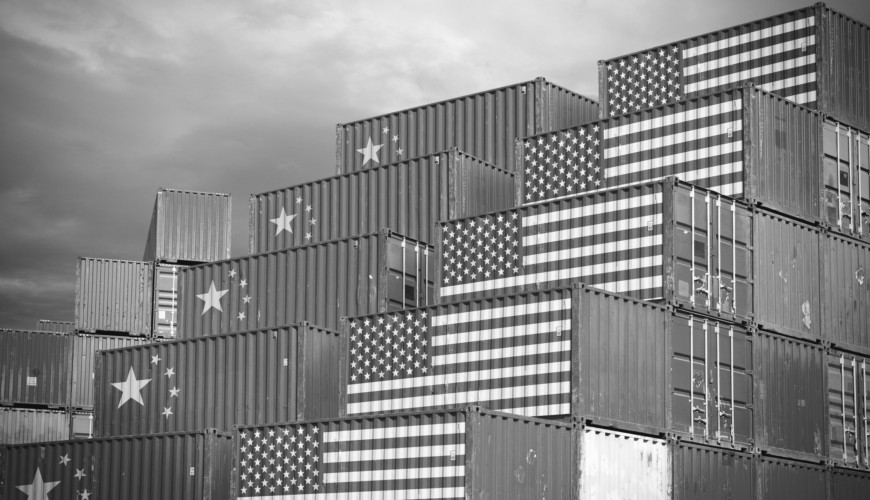The trade policies of the United States, particularly the recent focus on tariffs, have profoundly affected global supply chains. One of the most significant shifts in U.S. trade policy in recent years was the introduction of higher tariffs on major trading partners like China, Mexico, and Canada. These tariffs addressed various economic and geopolitical concerns, including trade imbalances, intellectual property theft, and labor practices. However, the decision to increase tariffs on these countries has had far-reaching consequences on supply chains, affecting everything from raw materials to finished products. This article explores the potential impact of rising tariffs on China, Mexico, and Canada on the U.S. supply chain, focusing on costs, production, global trade dynamics, and long-term business strategies.
Understanding the Tariff Changes
Before discussing the consequences of tariff increases, it is important to understand these changes and their rationale. In the case of China, the U.S. imposed tariffs on various goods to address intellectual property concerns and trade imbalances. Tariffs on Chinese imports escalated during the trade war initiated in 2018 under the Trump administration. By 2019, tariffs were levied on approximately $370 billion worth of Chinese goods, with rates ranging from 10% to 25%.
Similarly, in 2018, the U.S. imposed tariffs on steel and aluminum imports from several countries, including Mexico and Canada. These tariffs were part of an effort to bolster domestic industries and reduce the U.S. trade deficit. While Canada and Mexico were initially exempt from these tariffs, the trade tensions surrounding the renegotiation of the North American Free Trade Agreement (NAFTA) led to an increase in tariffs between the U.S. and these two countries as well.
These changes have significant implications for global supply chains, particularly for businesses that rely heavily on imports or operate manufacturing plants abroad. To understand the full effects of these tariff increases, we need to examine the immediate and long-term consequences for the supply chain.
Impact on Costs and Prices
One of the most direct consequences of higher tariffs is the increased cost of imported goods. Tariffs effectively raise the price of foreign products, which can significantly affect the cost structure of businesses that rely on these goods as inputs for their production processes. For example, a U.S. manufacturer that imports raw materials or components from China will see an increase in the cost of those materials due to higher tariffs. This, in turn, will increase the overall production costs.
These cost increases can be substantial for electronics, automotive, and consumer goods businesses, where a significant portion of production relies on imports from China, Mexico, and Canada. In the case of electronics, which often contain a combination of components sourced from multiple countries, tariffs on individual components can quickly add up, leading to higher prices for finished products. Similarly, the automotive industry, which has deeply integrated supply chains across North America, faces the challenge of rising costs for both parts and raw materials due to the increased tariffs on steel and aluminum.
The increase in production costs is not limited to the direct materials costs. Tariffs on imports can also cause ripple effects throughout the supply chain. For instance, suppliers of raw materials and components may raise their prices to cover the additional cost of tariffs, leading to an overall increase in the cost of manufacturing. Higher retail prices can then be passed on to consumers.
While some businesses may attempt to absorb the increased costs, many must raise prices to maintain profitability. This can lead to inflationary pressure as higher consumer goods and services prices ripple through the economy. The impact on consumer prices could further reduce the purchasing power of U.S. households, particularly for lower—and middle-income families.
Shifting Supply Chains
One of the most significant long-term consequences of tariff increases is the potential for companies to rethink their supply chains. As the costs of importing goods rise, businesses may look to mitigate these costs by shifting their sourcing and production strategies. For example, many companies that previously sourced products from China may shift their supply chains to other countries, such as Vietnam, India, or other Southeast Asian nations. These countries often have lower labor costs and fewer tariffs, making them attractive alternatives to China.
Similarly, businesses that rely on Mexico and Canada for raw materials or components may consider shifting some of their sourcing to domestic suppliers or other countries to reduce the impact of tariffs. This shift could have far-reaching effects on the global distribution of manufacturing and production. Countries once less involved in global supply chains may see an influx of investment as companies diversify their sourcing.
However, shifting supply chains is not a simple process. It often requires significant investment in new suppliers, facilities, and logistics infrastructure. This transition can take years and involve substantial costs, which could offset some of the benefits of avoiding higher tariffs. For example, businesses that switch from sourcing from China to a country like Vietnam may face challenges with quality control, lead times, and supply chain coordination.
In addition, the lack of established trade agreements and infrastructure in some countries could complicate shifting supply chains. Mexico and Canada, for example, benefit from the United States-Mexico-Canada Agreement (USMCA), which facilitates cross-border trade. The absence of similar agreements with other countries could make it more difficult for U.S. businesses to establish stable, cost-effective supply chains elsewhere.
Impact on Trade Relationships
The imposition of higher tariffs can also strain trade relationships between the U.S. and its trading partners. Trade wars and tariff increases can lead to retaliation from other countries, further disrupting global supply chains. For example, after the U.S. imposed tariffs on Chinese goods, China responded with its own tariffs on U.S. goods, including agricultural products, machinery, and chemicals. This retaliatory action can lead to disruptions in supply chains by limiting the availability of certain products or increasing their costs.
Similarly, Mexico and Canada have retaliated against U.S. tariffs on steel and aluminum by imposing tariffs on U.S. exports. This has created tensions between the U.S. and its North American neighbors, potentially damaging the collaborative trade relationships established under NAFTA. Although the USMCA has replaced NAFTA, ongoing trade tensions can undermine the effectiveness of this agreement, making cross-border supply chains less predictable and more costly.
Trade tensions also have the potential to impact other global trade agreements and negotiations. Countries that face high tariffs from the U.S. may seek to strengthen trade ties with other economic powers, such as the European Union or China. This could lead to a realignment of global supply chains as countries adjust their trade relationships to minimize the impact of U.S. tariffs.
Effects of Tariffs on Small and Medium-Sized Enterprises (SMEs)
While large multinational corporations have the resources to absorb some of the increased costs associated with tariffs or shift their supply chains to alternative countries, small and medium-sized enterprises (SMEs) are often less able to navigate these challenges. Many SMEs operate with slimmer margins and fewer resources, making them more vulnerable to the effects of rising tariffs.
Higher tariffs can create financial strain for SMEs that rely heavily on imported goods. These businesses may find it more difficult to absorb the increased costs or pass them on to consumers without sacrificing competitiveness. As a result, some SMEs may be forced to scale back operations, reduce their workforce, or even shut down altogether.
Furthermore, SMEs often lack the ability to quickly shift their supply chains to new countries. Identifying new suppliers, negotiating contracts, and setting up new logistics channels can be time-consuming and costly. For smaller businesses, the uncertainty surrounding tariffs and trade policies can make long-term planning difficult, leading to hesitation and inaction when adjusting supply chain strategies.
In some cases, SMEs may face the added pressure of competing against larger companies that are better equipped to manage the increased costs of tariffs. This could lead to greater consolidation in certain industries, with larger firms absorbing smaller competitors who cannot adapt to the changing trade environment.
Supply Chain Resilience and Risk Management
The tariff increase has highlighted the importance of supply chain resilience and risk management for businesses across all sectors. Tariffs and trade wars are just one of many factors that can disrupt supply chains, and businesses that rely on global sourcing must be prepared for a range of potential risks. These include changes in trade policy, natural disasters, geopolitical tensions, and shifts in consumer demand.
Businesses are increasingly focusing on diversification to build more resilient supply chains. Companies can reduce dependence on any single source by sourcing materials, components, and finished products from multiple countries. Diversification also helps mitigate the risks associated with tariff increases, as businesses can shift production to other countries if one region becomes too costly or unstable.
In addition to diversification, businesses also invest in technology and data analytics to better understand and manage their supply chains. This includes using predictive analytics to anticipate potential disruptions, optimizing inventory management, and improving transparency throughout the supply chain. With better visibility in supply chain operations, businesses can make more informed decisions about where to source materials and how to allocate resources.
Supply chain resilience is also about developing contingency plans for potential disruptions. Companies are increasingly creating “what-if” scenarios to prepare for the impact of tariff increases, trade wars, and other disruptions. These plans may include alternative sourcing strategies, production schedule changes, or logistics route adjustments.
Long-Term Strategic Implications of Tariffs
The long-term strategic implication of tariff increases on China, Mexico, and Canada are still unfolding. However, businesses must adapt their strategies for the new trade landscape. This may involve rethinking sourcing and production strategies, investing in automation and innovation, or pursuing new trade agreements and partnerships.
For some companies, the increased tariffs may lead to reevaluating their global footprint. In some cases, businesses may choose to “reshore” or bring production back to the United States to avoid the costs of tariffs on imports. This trend has already been seen in industries like manufacturing and electronics, where some companies have chosen to relocate their supply chains closer to home.
Conversely, businesses that rely heavily on global supply chains may continue seeking new sources of materials and components in other countries. As the global economy becomes increasingly interconnected, companies must balance the cost advantages of global sourcing with the risks associated with tariff fluctuations and geopolitical tensions.
The decision to increase tariffs in China, Mexico, and Canada has had far-reaching consequences for the U.S. supply chain. From increased costs and prices to shifting supply chains and changing trade relationships, these tariffs’ impact is felt across industries and businesses of all sizes. While large companies may be better equipped to absorb these costs and adjust their strategies, small and medium-sized enterprises face more significant challenges navigating this uncertain trade environment.
In the long term, businesses must build more resilient supply chains, diversify sourcing strategies, and invest in technology to better manage risks. The changing trade landscape presents challenges and opportunities, and companies that can adapt quickly will be better positioned to thrive in the evolving global economy.


